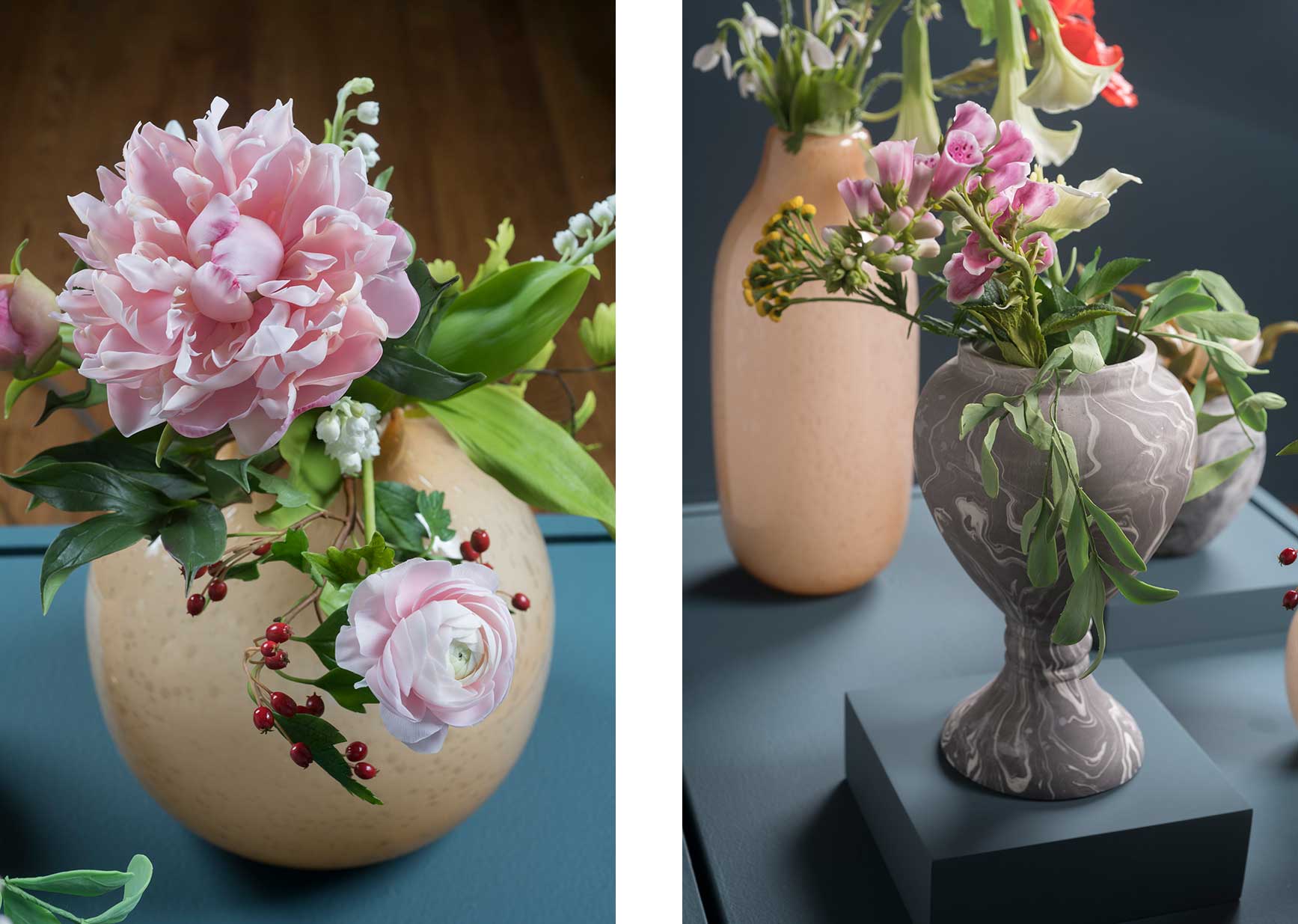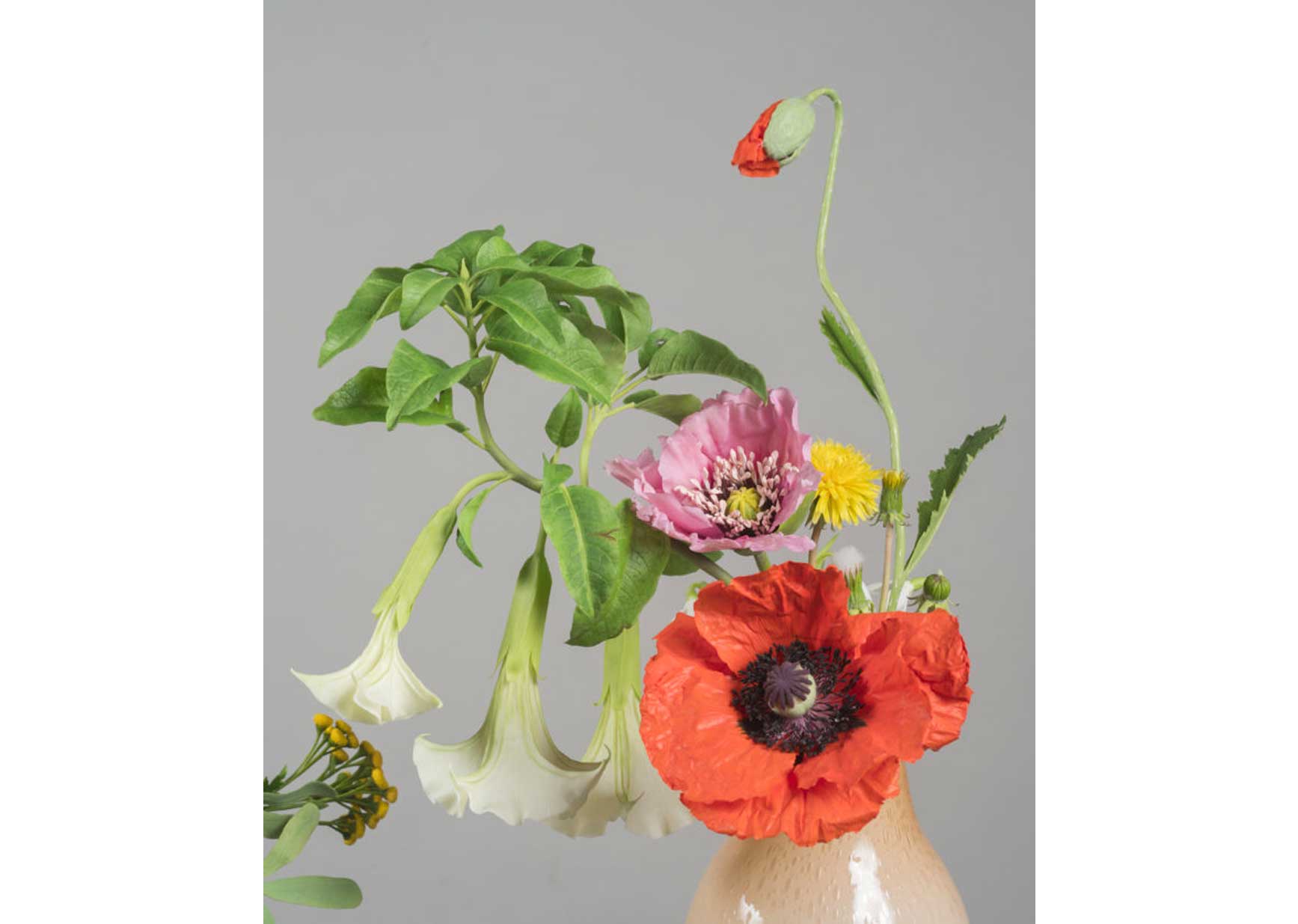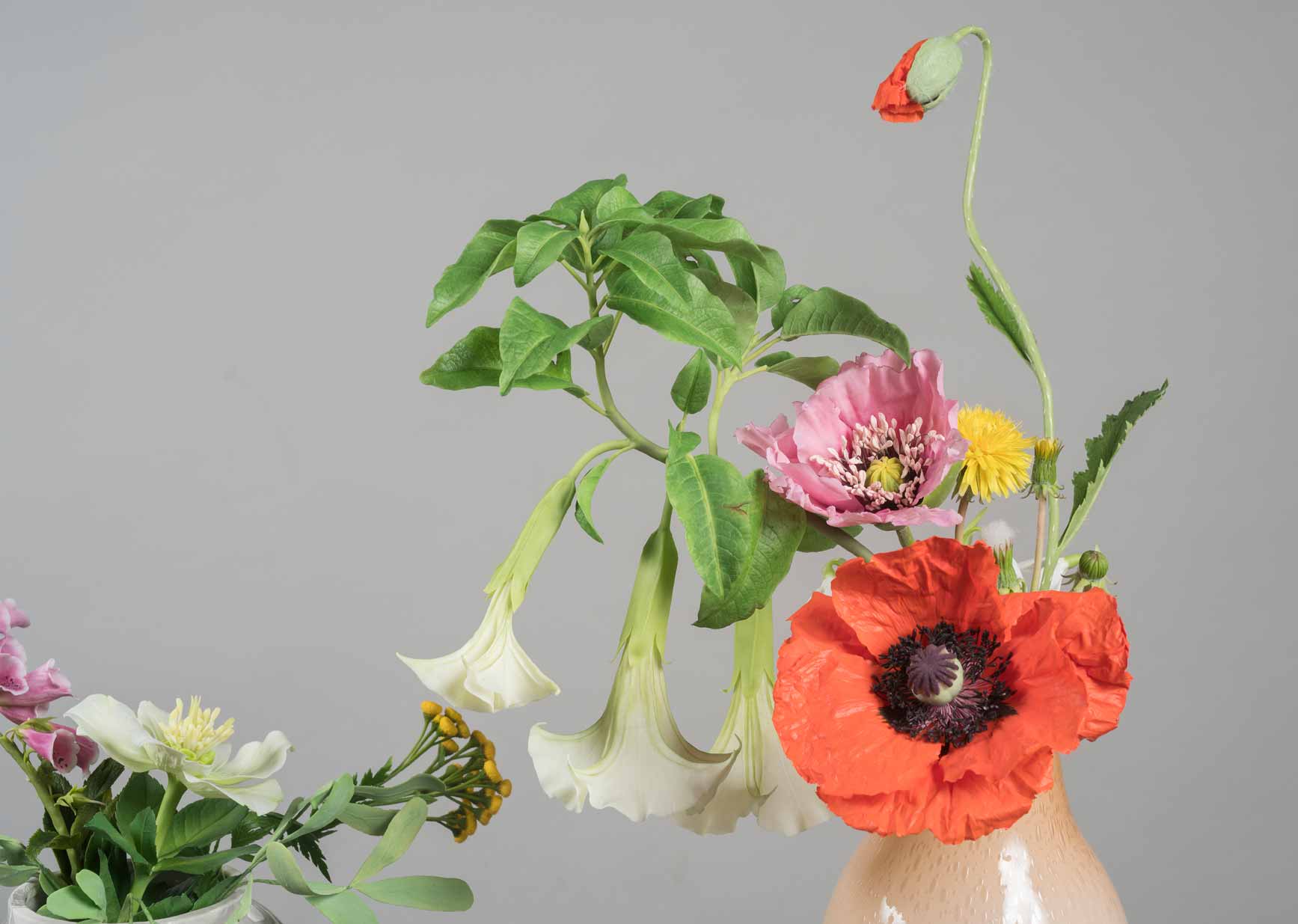In addition to the four large paintings Angela Fraleigh created for Sound the Deep Waters, the artist assembled five bouquets to complement the Victorian-era imagery on view. Floriography, or the language of flowers, is the use of a flower as a means of coded communication. By the middle of the 1800s, guides were published to denote the meanings, and the many—and sometimes varied—connotations were generally understood. A specific type of flower may reference an individual’s trait, intention, sentiment, social concern, or condition. Aside from symbolic associations, many flowers have practical uses—aromatic, medicinal, or toxic—and their use has been explored and regulated depending on social norms.
Sculpted by Fraleigh and international, female flower artists from cold porcelain—a polymer clay—the blooms appear lifelike. Fraleigh gathered arrangements that are hopeful and powerful, poisonous, can induce menses, denote LGBTQ+ identity, or refer to the Greek goddess Circe. To the experienced, such intentions are known; to others the implications remain hidden in plain sight.
Flowers and Their Sentiments

Hawthorn – Hope
Lily of the Valley – Delicacy or Return of Happiness
Maidenhair Fern – Sincerity or Strength
Peony – Hardiness
Ranunculus – Radiant with Charms
Snowdrop – Consolation or Hope
Foxglove – Salubrity or Insincerity
Hellebore – Folly or Scandal
Rue – Disdain, Grace, or Regret
Tansy – Declaration of War or Resistance

Dandelion – Oracle
Datura – Deceitful Charms or Disguise
Poppy –Impudence, Sleep, My Bane, or My Antidote
Snowdrop – Consolation or Hope

Cold porcelain, wire, oil paint, and pastel in ceramic vessel
Southern Magnolia – Dignity or Perseverance
Malmaison Green Carnation – Strong and Pure Love
Pansy – Tender and Pleasant Thoughts
Violet – Faithfulness
A Botanical Reading List
Eve’s Herbs: A History of Contraception and Abortion in the West by John M. Riddle (Cambridge, MA: Harvard University Press, 1999)
Flowers; Their Use and Beauty in Language and Sentiment edited by Arthur Freeling (London: Darton and Co., 1851)
Language of Flowers by Edmund Evans, illustrated by Kate Greenaway (London: George Routledge and Sons, 1884)
The Language of Flowers: A History by Beverly Seaton (Charlottesville, VA: University Press of Virginia, 1995)
“The Magnolia of Lake Pontchartrain,” by Margaret Fuller in The Dial: A Magazine for Literature, Philosophy, and Religion (January 1841)
“Rooted in Truth,” by Matt Kaplan in Discover Magazine (November 2015)
Artwork courtesy of Angela Fraleigh and international flower artists Bohdanova Olena Anatoliivna, Tatiana Godunova, Julia Oleynik, Shaile Socher, and Maria Varganova. Photographs by Carson Zullinger. © Angela Fraleigh.

